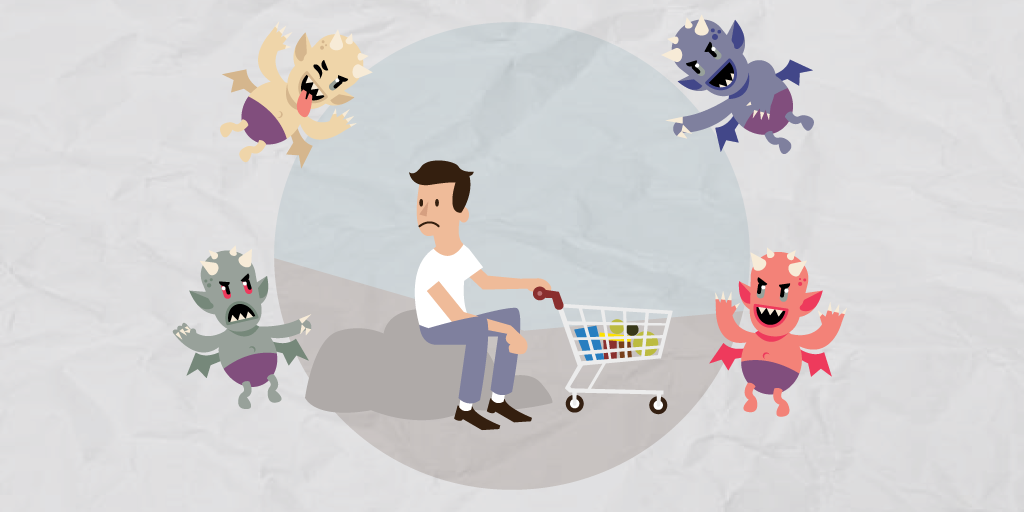Customer-centric is one of those seemingly self-evident terms — it’s the melding of the words “customer,” and “center”. Obviously, a customer-centric approach means putting the customer first, right?
While this is true, it only scratches the surface of “customer-centric”.
Businesses have to actually act in a way that follows their proclamation. As usual, actions speak louder than words.
It’s not enough to smile, and help Mrs. Butters find what she's looking for as she meanders, confused, through the aisles. Customer-centric means not just helping your customers but understanding them.
Now, we’re getting somewhere. In the end, a true definition is that customer-centric is a culture as well as a strategy.
A Customer-Centric Culture
What do we mean when we say that customer-centric is a culture? Plenty of executives spout that their business is “customer-centric”. But let’s turn off that faucet before it floods the sink.
What they mean is an abstract concept. “Of course we place the customer first! That's customer psychology 101!”
But what we’re talking about here is rather pragmatic — a customer-centric culture through actions, tangible steps that can be realized.
A customer-centric strategy shifts its priorities within each of its sectors. It’s not just customer service representatives who need to orbit customers. It’s the engineer, the belt loader, the CEO, CTO, the blog writer, etc.
Customer-centric is a mental orientation which produces actionable outcomes.
Part of that process may be the adoption of a queue management system to provide an easier, more efficient queueing experience.
Or, maybe an overhauled customer experience strategy means redesigning the store layout, understanding how customers flow along their journey.
A customer-centric approach has to permeate every single aspect of the business. It becomes a mission, one that's apparent before customers walk in the door and lingers long after they leave.
Identify Loyal Customers

Dr. Peter Fader, co-director of the Wharton Customer Analytics Initiative, has his own insightful twist on customer-centricity.
He proclaims that the optimal customer-centric approach is to identify the most valuable customers.
It’s the right line of thinking. You want the analytics that tells you who your best customers are, how much they spend, what products link together in their shopping carts, etc.
Why?
This data is not only for marketers to use to better target customers with relevant promotions. This data also helps you keep your most valuable customers happy, which is how you maintain and promote your business.
These customers are representatives of why your business works.
Spreading Your Net
The end result of a customer-centric strategy that picks out the most valuable customer might be best illustrated by Malcolm Gladwell’s The Tipping Point.
Stay with me.
Customers are your business’ tacit representatives — the Salesman in Gladwell’s terminology. Provide them with a customer centric culture and they’re likely to spread the word to friends and family, and to potential customers on websites such as Yelp and Google Reviews.
As evidenced by Nielsen's survey, 92% of consumers stated they’re more likely to trust friends and family over any advertising. Despite the advancements of the digital age, word of mouth is still a powerful force in advertising.
Loyal customers weave their web of influence over ever larger areas, catching more people and bringing them into your business.
A customer-centric strategy invariably increases your potential customers. Isn’t that already enough to realign your vision so that it’s customer-focused?
Don’t Lose Your Best Customers

There’s a more fundamental reason to target the most valuable customers. It’s rather simple, if not to say obvious — businesses cannot afford to lose their best customers.
“Acquiring a new customer is anywhere from five to 25 times more expensive than retaining an existing one,” writes the Harvard Business Review. Ouch.
Companies have to minimize their rate of customer churn (the percentage of customers who stop shopping with their business). Part of the solution lays in a customer-centric culture, and part rests in targeting those most loyal customers.
As an added bonus, a revamped customer-centric strategy designed to keep current customers will attract new customers as well. Bain & Company found that a 5% increase in customer retention leads to an overall increase in profit — up to 25% more.
The moral of the story is, keeping your customers happy and keeping your business happy are two sides of the same coin. Do not neglect the power of customer feedback.
Understanding Your Customers
We’ve talked briefly about analytics in regards to Dr. Fader’s proposal. But now let's shift to a higher gear.
There’s more to customer-centric data than simply identifying who the most valuable customers are. You want to slice up the rest of the customer pie chart into appropriate pieces, fitting customers into neatly segmented populations.
At one end of the spectrum lay the least valuable customers as part of your customer-centric strategy.
Who Not to Target

Let’s be careful when we say “least valuable customers”. What we really mean is that these customers are not statistically relevant.
Maybe they show up to Target every now and then to buy cat litter and paper towels. We can’t reasonably predict they’ll continue shopping at our store, and their purchasing choices are too eclectic and limited to be valuable.
There are also sporadic customers. You’ve surely come across these in your life — heck, we are sporadic customers from time to time. Even a huge purchase like a 4K HDTV doesn’t matter if it’s done only once.
These customers are outliers. They’re difficult to target directly as part of our customer-centric strategy.
You want to use customer-centric analytics to identify consistency. Those customers who reliably shop at your store, whose habits you can predict, the ones you can offer a persistent customer centric approach to.
Increasing Customer Retention
On the other hand, the essence of a customer centric approach is to increase customer retention. People want to shop at stores that provide great customer experiences, that minimize the hassle, that go out of their way to meet the needs of the customer.
With integrated analytics that are customer-centric, businesses learn who their customers are. Who spends the most? What are they shopping for? Why my store? The guessing game is no more.
Understand what purpose your store serves for persistent customers, and capitalize on that information.
Embracing All Customers

We started this article by discussing culture and moved into an analytics-based approach to being customer-centric. It might be tempting to conclude that companies only need to worry about their most valuable customers.
But that is wrong.
Every single customer counts. What varies is the degree to which a business devotes resources.
The reason we highlight the most valuable customers is to identify who we aim our marketing campaigns at. These are the customers we want to give 120% to because they make up a reliable population of the business.
That doesn’t mean you should ostracize other customers — that’s against the entire point of a customer-centric strategy. You still want to provide the greatest degree of customer service possible, even to the cat litter and paper towels shoppers.
Who knows, you may turn that one-time shopper into a regular customer or encourage your customers' impulse buying. At the same time, you never know who’s a potential lifetime customer.
A customer-centric culture is the fastest way to raise your business up a customer service pedestal. Customers want excellent customer experiences — and not everyone can deliver them.
It starts with a mentality and moves into data. The combination of the two leads to a customer experience strategy that seeks to understand the needs of customers and meet them — to go above and beyond.
Becoming a customer-centric company is a long journey, but it starts with a simple step. Sign up for a 14-day free trial to fully understand what it means to put your customers first.






